Dec. 3 update Latest on COVID-19 in MN: 92 more deaths add to grim 7-day toll

Updated: 11:45 a.m.
COVID-19 continues to take a brutal toll on Minnesota. The Health Department on Thursday reported 92 more deaths tied to the disease.
The three highest daily death counts in the pandemic have all come in the past week, pushing the seven-day average to 58 deaths reported daily, a record high in the pandemic.

New hospital admissions retreated from Tuesday’s record seven-day average, but hospitalization levels remain high. More than 1,700 people were in hospitals with COVID-19 as of Wednesday; more than 350 needed intensive care.
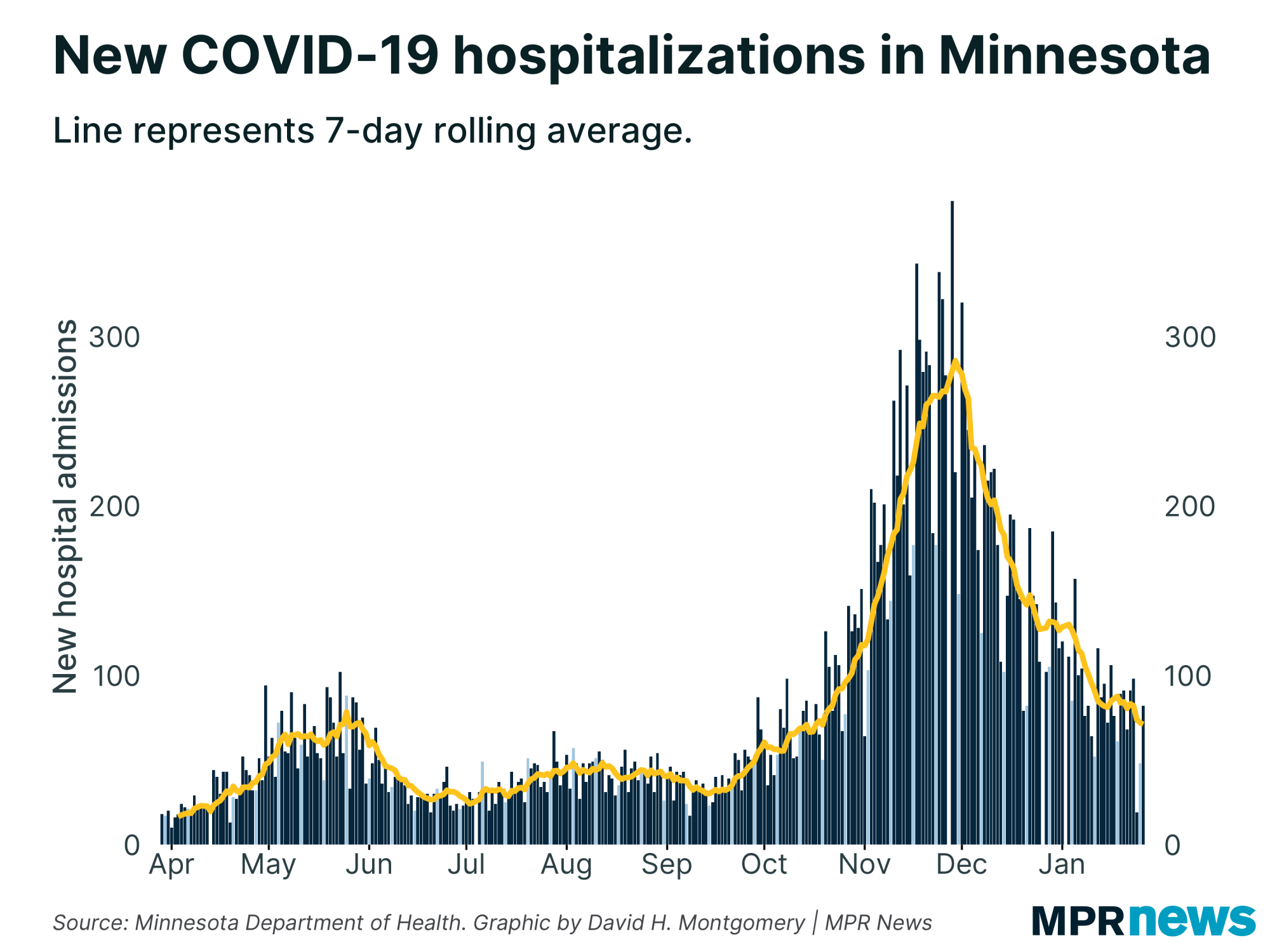
The latest numbers come as officials brace for another expected wave of cases, hospitalizations and deaths in coming weeks originating from Thanksgiving gatherings. About 1 in 3 recent Minnesota deaths are tied to COVID-19.
Create a More Connected Minnesota
MPR News is your trusted resource for the news you need. With your support, MPR News brings accessible, courageous journalism and authentic conversation to everyone - free of paywalls and barriers. Your gift makes a difference.
Officials on Thursday posted 6,166 newly confirmed or probable cases of the disease, pushing the pandemic total in Minnesota to 333,626. About 87 percent of the people in those cases have recovered to the point they no longer need to be isolated.
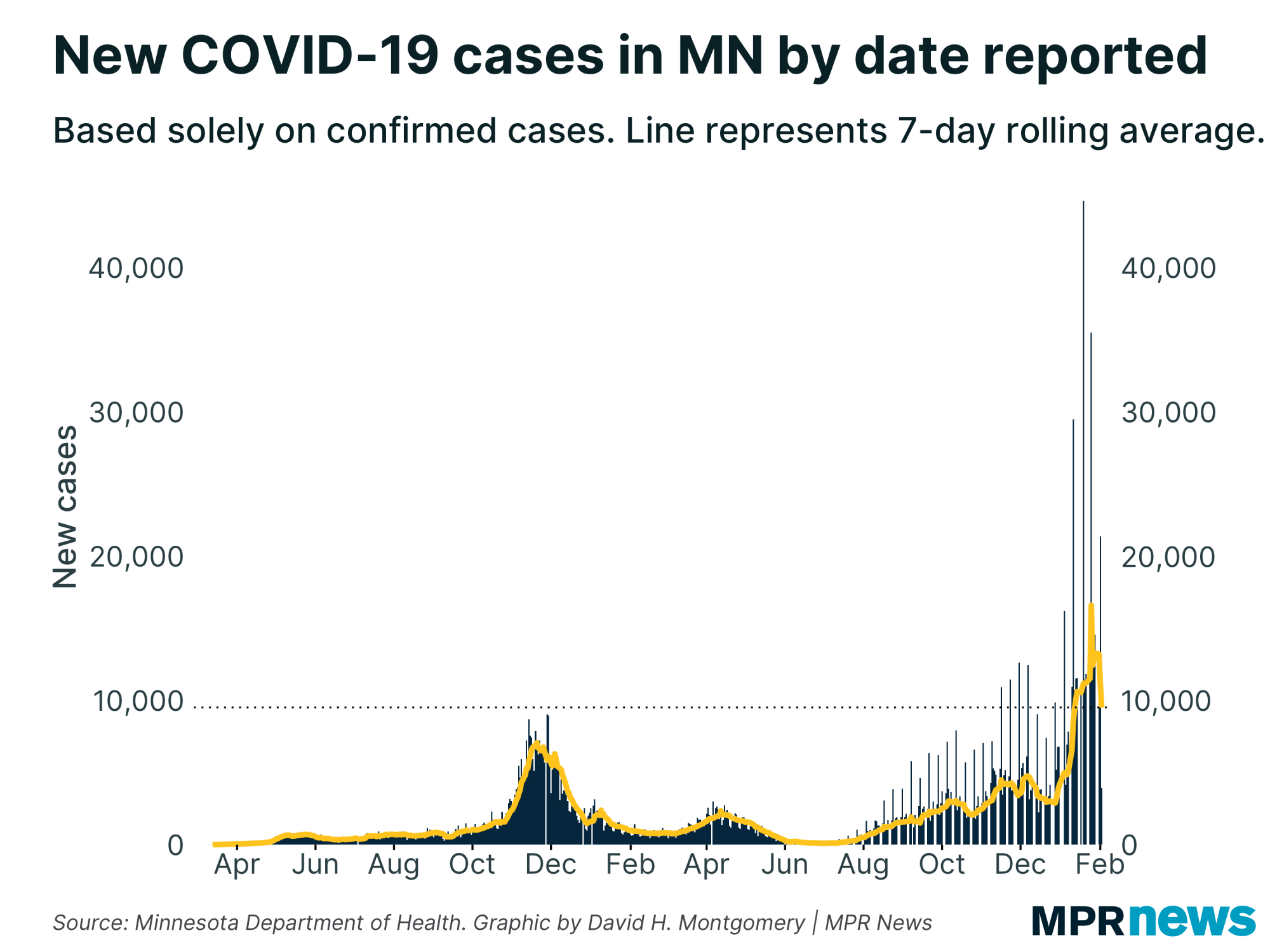
The deaths reported Thursday raised Minnesota’s toll to 3,784. Among those who’ve died, about 67 percent had been living in long-term care or assisted living facilities; most had underlying health problems.
At current growth rates COVID-19 deaths in Minnesota would double in 42 days, adding another 3,784 deaths by Jan. 14.
Caseloads spread across age groups
New cases have been climbing over the past month among all age groups.
People in their 20s still make up the age bracket with the state’s largest number of confirmed cases — more than 64,000 since the pandemic began, including nearly 35,000 among people ages 20 to 24.
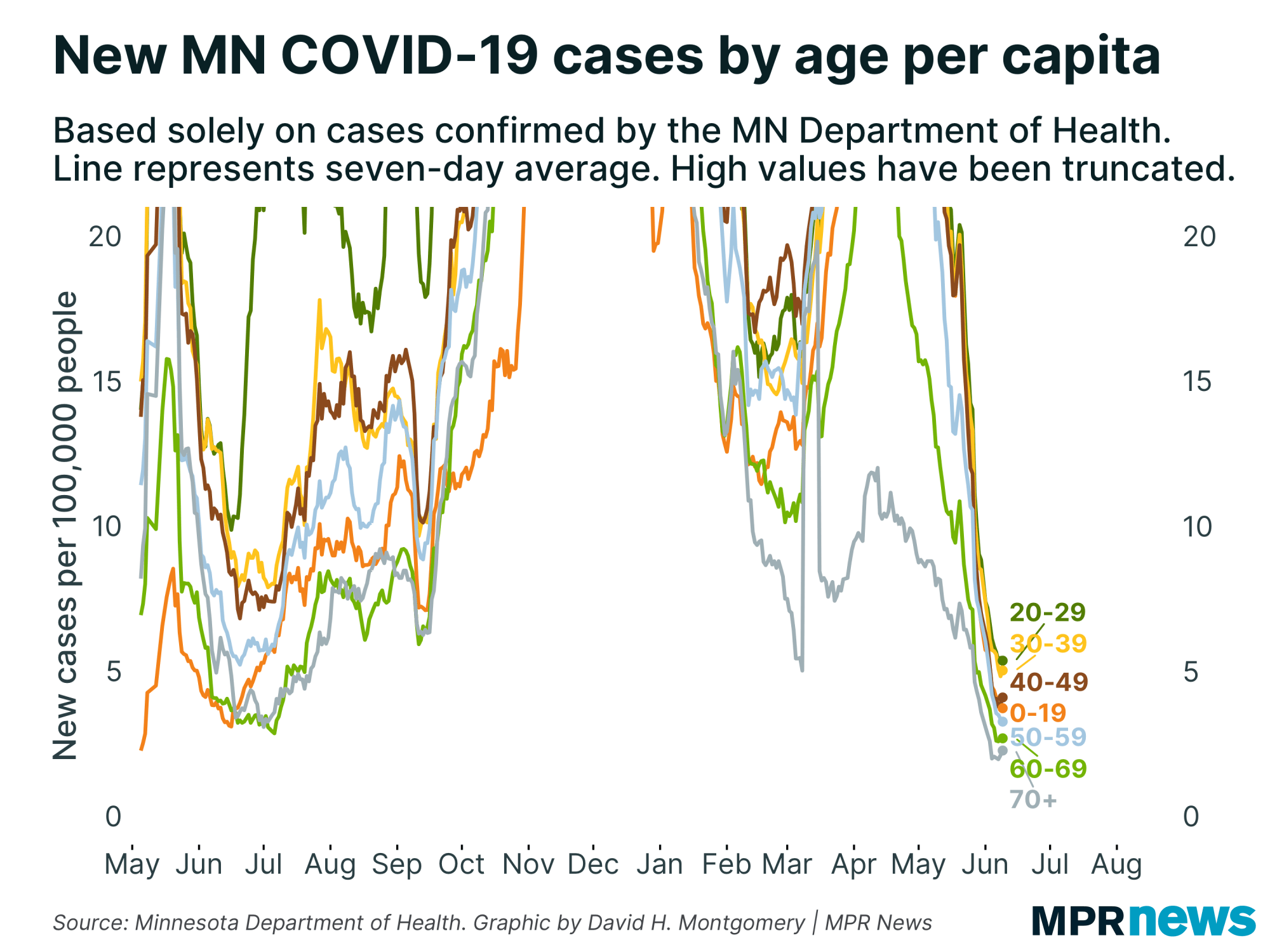
The number of high school-age children confirmed with the disease has also grown, with more than 26,000 total cases among children ages 15 to 19 since the pandemic began.
Although less likely to feel the worst effects of the disease and end up hospitalized, experts worry youth and young adults will spread it to grandparents and other vulnerable populations.
It’s especially concerning because people can have the coronavirus and spread COVID-19 when they don’t have symptoms.
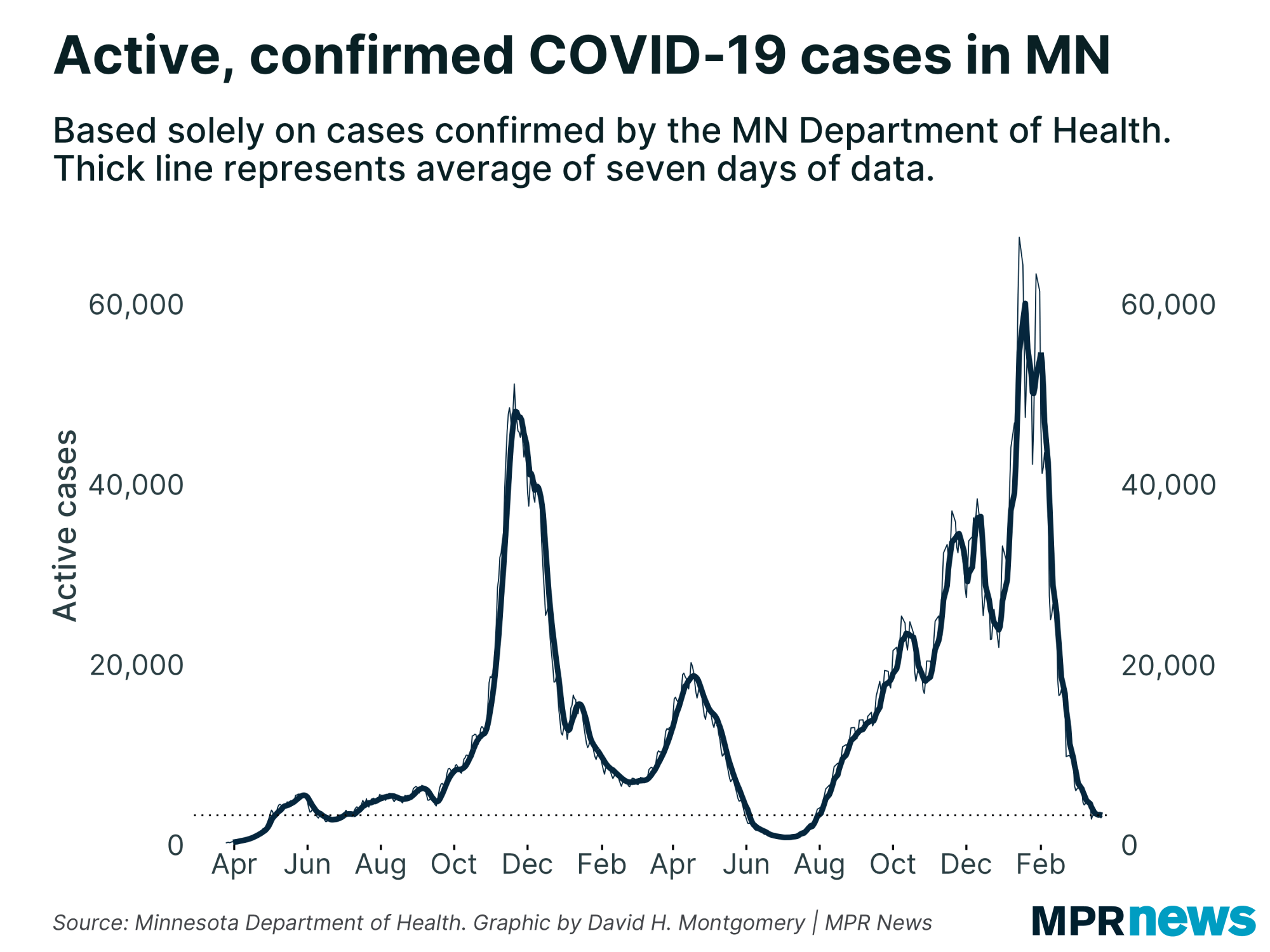
Walz said recently the state has data showing infection rates rising around bar and restaurant activity after 9 p.m. among young adults, noting that people who have the virus but don’t have symptoms may be unwittingly spreading it.
It’s one of the reasons he’s ordered a ban on in-person service at bars and restaurants until Dec. 18.
Virus surges across rural Minnesota
Regionally, central and northern Minnesota have driven much of the recent increase in new cases while Hennepin and Ramsey counties show some of the slowest case growth in the state.
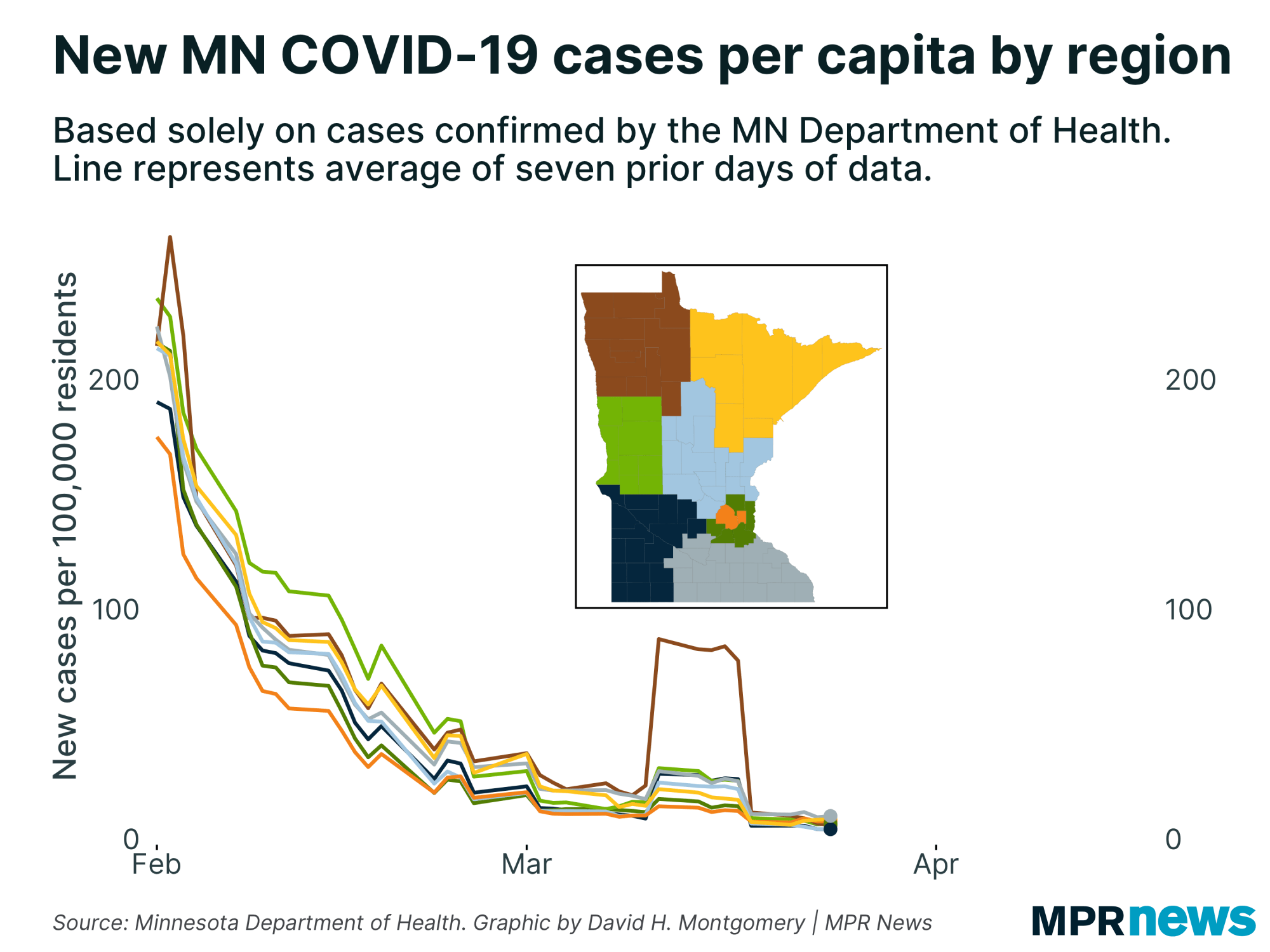
The fastest growing outbreaks remain largely along the state’s western border with the Dakotas, where the virus is spreading unchecked. But new cases are rising everywhere in Minnesota.
Collectively, rural areas continue to report the most new COVID-19 cases per capita.
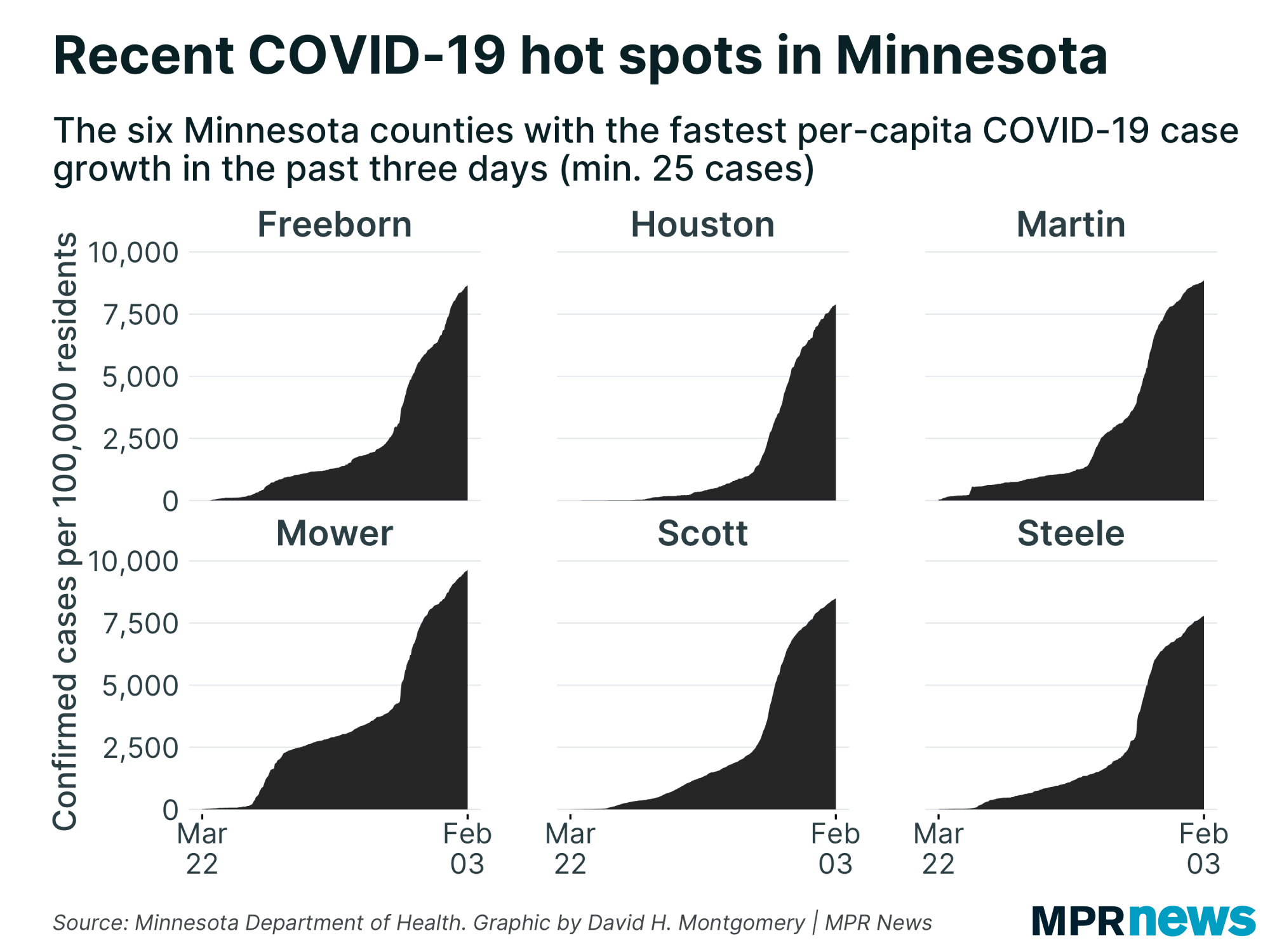
Latino cases climb
In Minnesota and across the country, COVID-19 has hit communities of color disproportionately hard in both cases and deaths. That’s been especially true for Minnesotans of Hispanic descent for much of the pandemic.
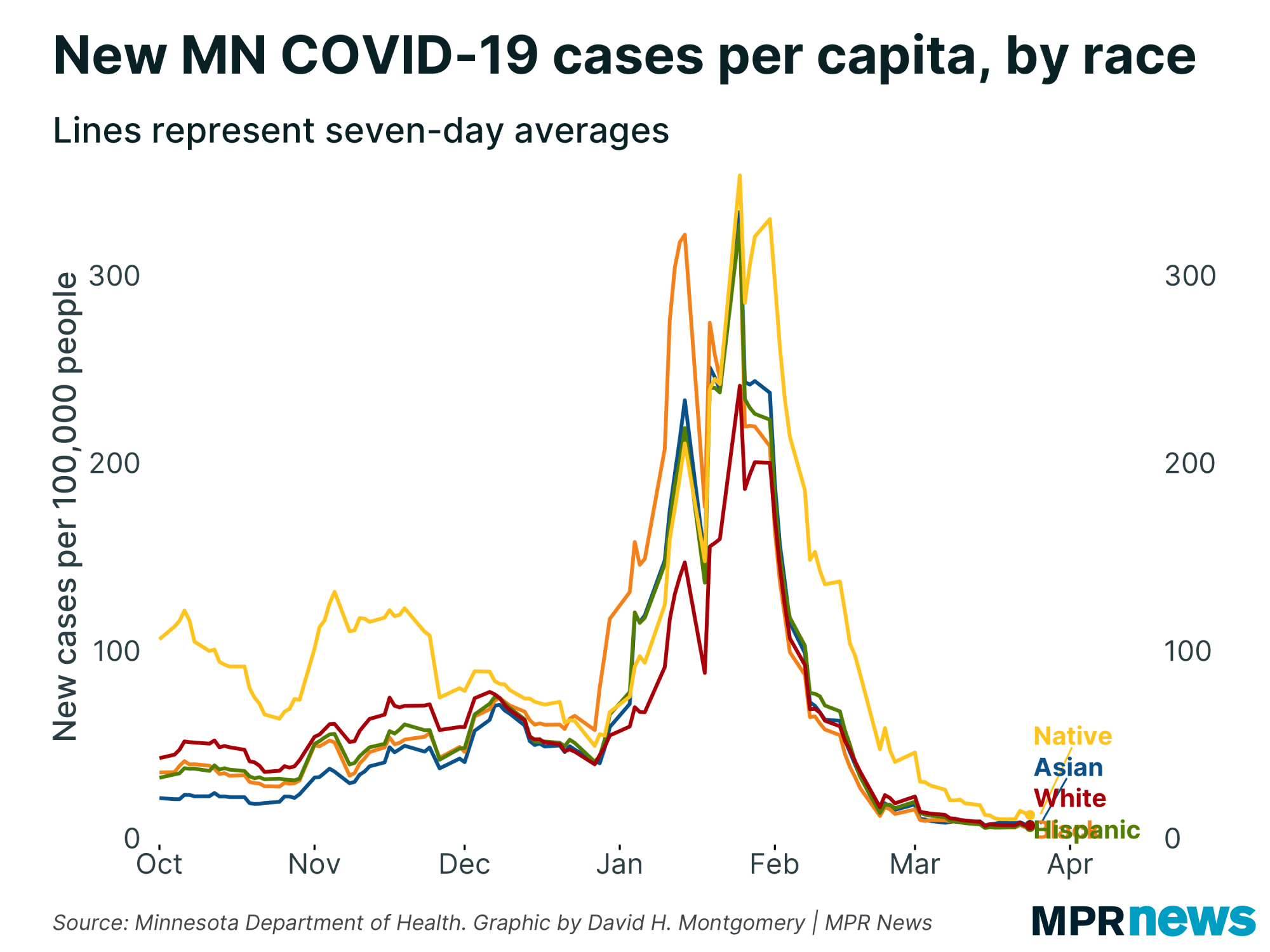
Distrust of the government, together with deeply rooted health and economic disparities, have hampered efforts to boost testing among communities of color, officials say, especially among unauthorized immigrants who fear their personal information may be used to deport them.
Similar trends have been seen among Minnesota’s Indigenous residents. Counts among Indigenous people jumped in October relative to population.
Cases among all races and ethnicities continue to rise, although currently the growth is slowest among Black Minnesotans, who reported the most new COVID-19 cases per capita for much of the spring and summer.
1 in 3 recent deaths tied to COVID
Minnesota’s daily death counts from COVID-19 have been especially hard to handle over the past two months. More than 1,100 people died in November alone, about 30 percent of the total in the entire pandemic.
It’s now killing Minnesotans at a rate far higher than any recent flu season. Roughly one-third of all recent deaths in Minnesota are tied to COVID-19.
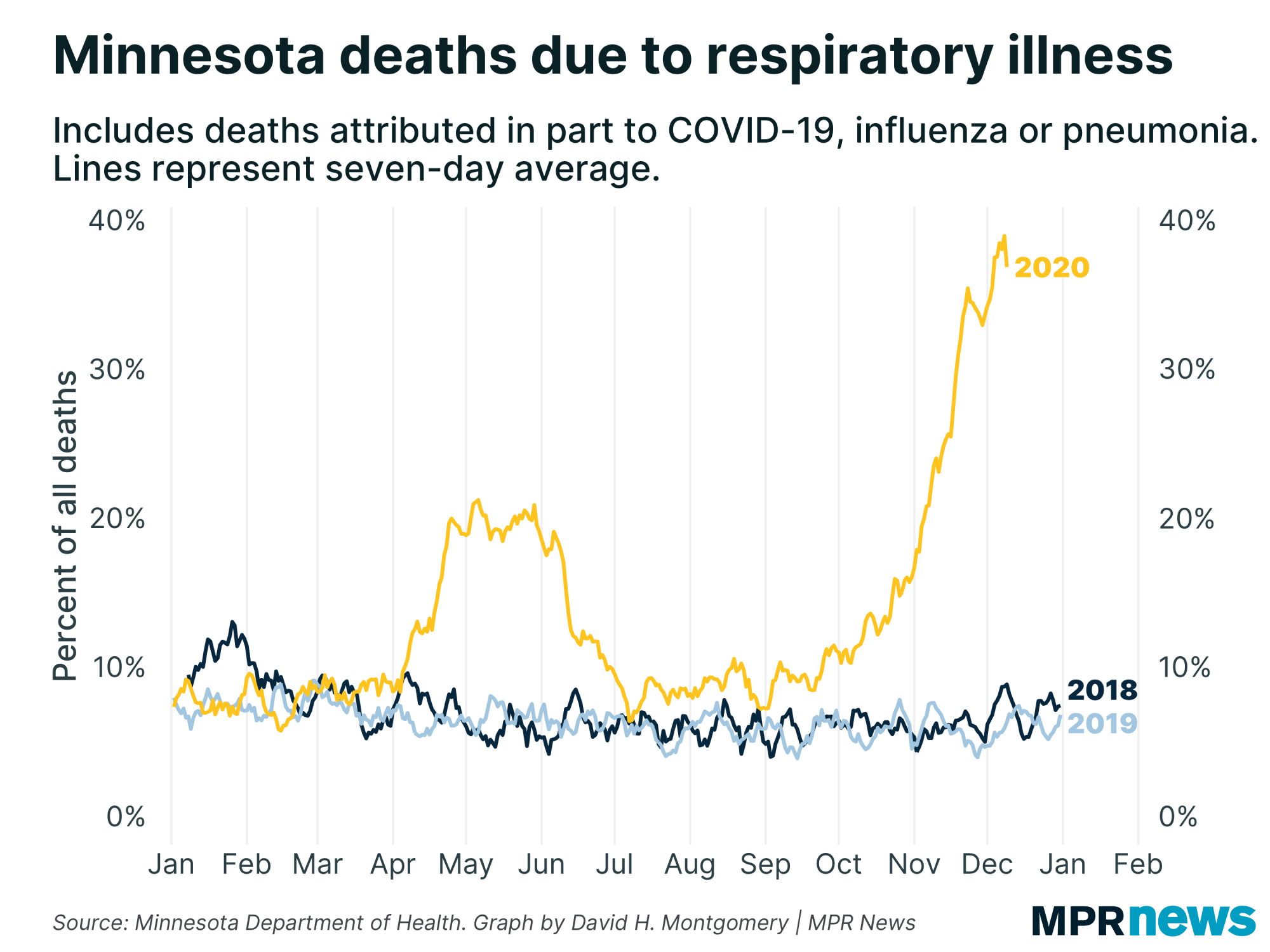
In the past few years, respiratory illnesses have been a major contributing factor in about 5 to 10 percent of all deaths in Minnesota, depending on the time of year.
They accounted for around 20 percent of deaths during the state’s May COVID-19 wave. Now it’s even higher: nearly 40 percent of all deaths in Minnesota in recent weeks have been attributed to a respiratory illness such as COVID-19, influenza or pneumonia.
‘Challenging weeks ahead’
Public health officials have been trying to inject some hope into the difficult times. Earlier this week, they sketched out their plans to distribute vaccines as soon as they’re available. Federal vaccine approvals could start as soon as next week.
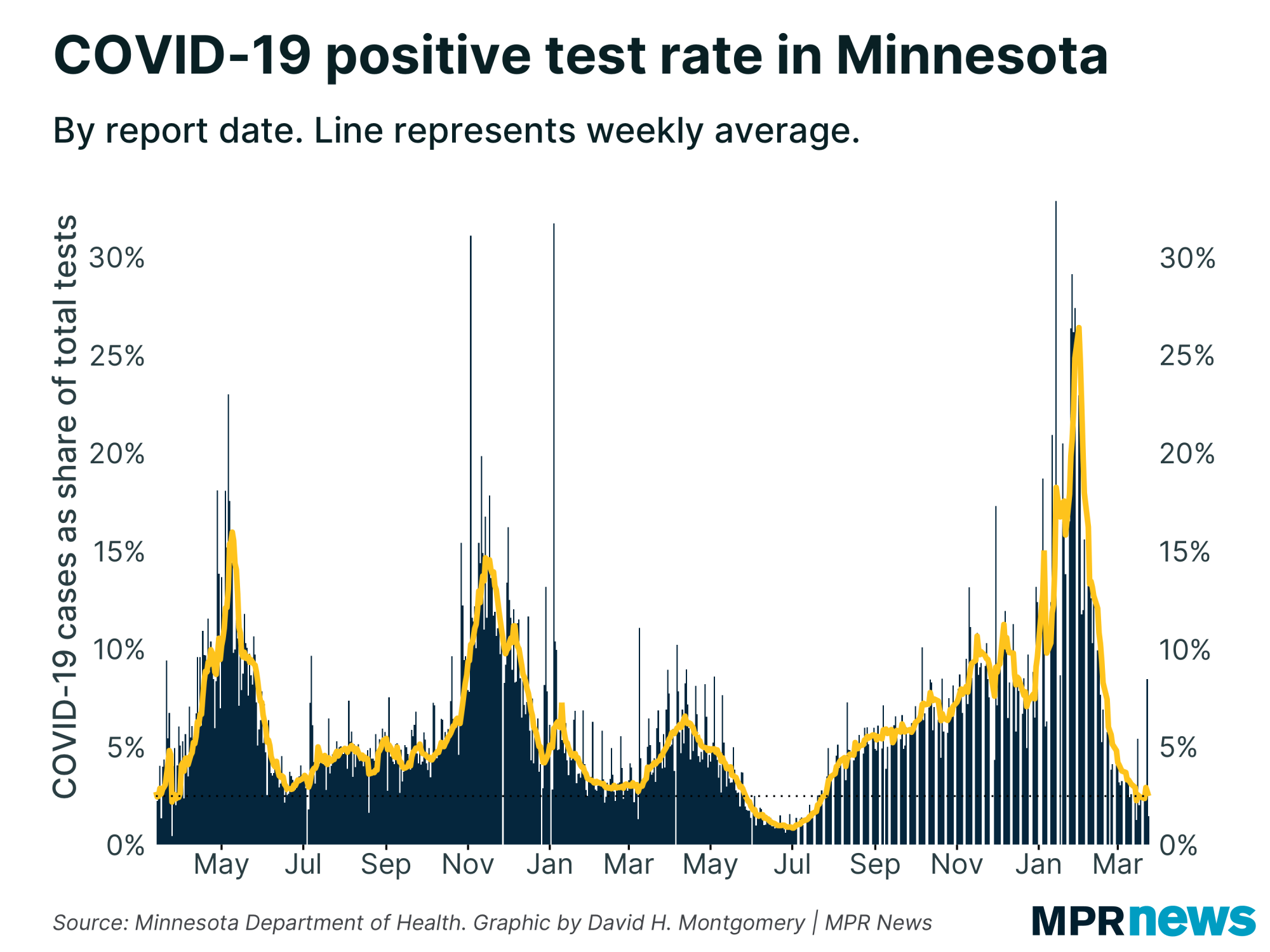
“We have been talking about the light at the end of the tunnel. It's there and it’s getting closer all the time. But we do have to stay the course a bit longer before we reach it,” Kris Ehresmann, the state’s infectious disease director, said Tuesday.
The short-term direction of the pandemic, however, is still unclear. Analysts have cautioned not to read too much into the most recent figures because of the long holiday weekend.
“These daily numbers can and do fluctuate” but “we do remain in a very critical stage of the pandemic,” Minnesota Health Commissioner Jan Malcolm told reporters Tuesday. “We are still in for some very challenging weeks ahead in terms of hospital capacity.”
Officials continue to plead with Minnesotans to wear masks in public gathering spaces, socially distance, stay home if they don’t feel well and otherwise stay vigilant against the spread of COVID-19.
On Monday, Walz said he’d likely call on Minnesotans not to travel or gather for Christmas.
“I think the guidance around Thanksgiving is going to be very similar around Christmas,” he told reporters Monday, adding there was “little reason” to expect a change in the trajectory of the virus in the next four weeks.
‘The honest, horrible truth’
State health systems are straining to staff hospital beds as COVID-19 cases grow and doctors, nurses and other care workers struggle to cope with illness among their own families and colleagues.
State officials for weeks have been raising concerns that health care workers are being sidelined by COVID-19, either by illness or exposure in their communities, or else having to care for loved ones.
Malcolm on Tuesday said 56 health care operations in the state have “staffing support needs … It is very definitely an ongoing challenge.”
The public needs to know the state’s health system is under serious stress, Dr. Cindy Firkins Smith, president of Carris Health in western Minnesota, told MPR News Monday.
“We have to tell it like it is. We have to give people the honest, horrible truth of what we're facing,” she said. “We have to tell them, ‘If you don't do it — if you, the public, don't do what you can do — we can't save you because there are only so many people to take care of people out there.’”
Developments around the state
Need housing aid? Deadline is nearing
Time is running out for cash-strapped Minnesotans to apply for housing assistance money made available during the COVID-19 pandemic.
This summer, the Walz administration directed $100 million of federal aid to a housing program to help people in financial distress pay their mortgage, rent and utilities. As of this week, about $30 million remains, but there’s a Dec. 7 deadline to apply.
“We’ve got room for one more big push here to pay December bills,” said Minnesota Housing Commissioner Jennifer Ho who noted that the grant money has gone further than officials expected but added that they know help is still needed.
Katrina Hull of Albert Lea said it’s been critical assistance while she’s been out of work due to coronavirus fallout and she’s had to care for an elderly family member.
“Rent was still due, utilities were still due and I was in a pretty big bind,” Hull said.
Information about the program can be found by dialing 211 or going to 211unitedway.org.
— Brian Bakst | MPR News
Top headlines
COVID-19 claims life of Hmong American leader and Secret War veteran: Tou-Fu Vang, a Hmong community leader and former lieutenant colonel in the Secret War, died on Thanksgiving Day after several weeks in the hospital fighting COVID-19.
MN Court of Appeals allows high school students to receive pandemic unemployment assistance: According to court documents, a previous ruling was reversed Tuesday, allowing qualified high school students to receive assistance through the current CARES Act.
Caregivers challenged by latest pandemic surge: State officials say this is a critical time in the coronavirus outbreak. This week, four Mayo Clinic staff members who have been working with COVID-19 patients since the beginning of the pandemic talked about their experiences on a call with reporters.
States with few coronavirus restrictions are spreading the virus beyond their borders: Lax states are attracting shoppers and students from stricter neighbors — and sending back COVID-19 cases. The imbalance underscores the lack of a national policy.
COVID-19 in Minnesota
Data in these graphs are based on the Minnesota Department of Health's cumulative totals released at 11 a.m. daily. You can find more detailed statistics on COVID-19 at the Health Department website.